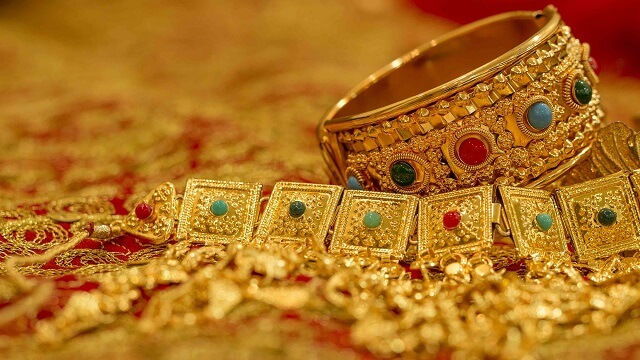
The Offering of Midianite Jewelry
After the reprisal attack against Midian, the Israelite soldiers presented an unusual donation to the Tabernacle: gold jewelry seized from the Midianite women.
“We wish to bring an offering to God. Every man who found a gold article — an anklet, a bracelet, a ring, an earring, or a body ornament — to atone for our souls before God.” (Num. 31:50)
Why did the soldiers bring this odd offering to the Tabernacle? The Talmud (Shabbat 64a) explains that they felt a need for atonement - not for improper actions — but for improper thoughts when they came in contact with the Midianite women.
Still, why not bring a more conventional offering? And why does the Torah list all of the various types of Midianite ornaments?
Some of the jewelry was of the normal variety, worn in full view, such as rings and bracelets. Other pieces, however, were of an intimate nature, worn underneath the clothes, like the kumaz, a suggestive body ornament. From the association that the Torah makes between ordinary jewelry and intimate ornaments, the Talmud derives the moral lesson that “to gaze at a woman’s little finger [for enjoyment] is like staring at her undressed.”
What is so terrible about enjoying a woman’s natural aesthetic beauty?
The Snare of Superficial Beauty
On its own accord, beauty has intrinsic worth, and can make a positive impression on the soul. The soul gains a wonderful sense of expansiveness when it experiences aesthetic pleasures that are pure.
However, if the beauty is covering up that which is ethically repulsive, this attractiveness becomes a spiritual hazard. The external charm is but a snare, entrapping in its inner ugliness those caught in its net. In general, we only succumb to that which is morally repugnant when it is cloaked in a veneer of superficial beauty.
This was precisely the casus belli for the war against Midian. The young women of Moab and Midian enticed the men with their outer beauty, leading them to perform the vile idolatrous practices of Pe'or. The Midrash describes their method:
“When [the Israelite man] was overcome by lust and asked her to submit to him, she pulled out a statue of Pe'or from her bosom and demanded: ‘First, prostrate yourself before this!'” (Sifrei 25:1; Rashi on Num. 25:2)
This phenomenon encompasses an even greater pitfall. The simple act of staring at that which is prohibited undermines the soul’s healthy sense of moral rectitude and purity. If we are attracted to that which is morally repugnant, we become desensitized to the ugliness of the sin. The superficial beauty not only conceals the inner sordidness, it diminishes our loathing for it.
Even if the soul has not been sufficiently corrupted to be actually ensnared in the net of immorality, its purity has nevertheless been tainted by an attraction to that which is forbidden. For this reason, the Israelite soldiers who fought against Midian required atonement. To make amends for their spiritual deterioration, they brought a particularly appropriate offering: gold jewelry, whose shiny and glittery exterior concealed its corrupt inner core. The officers donated jewelry that is worn openly, as well as ornaments worn intimately. They recognized that both types of jewelry share the potential to desensitize the soul and damage its integrity.
(Sapphire from the Land of Israel. Adapted from Ein Eyah vol. IV, p. 116)





